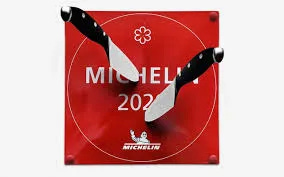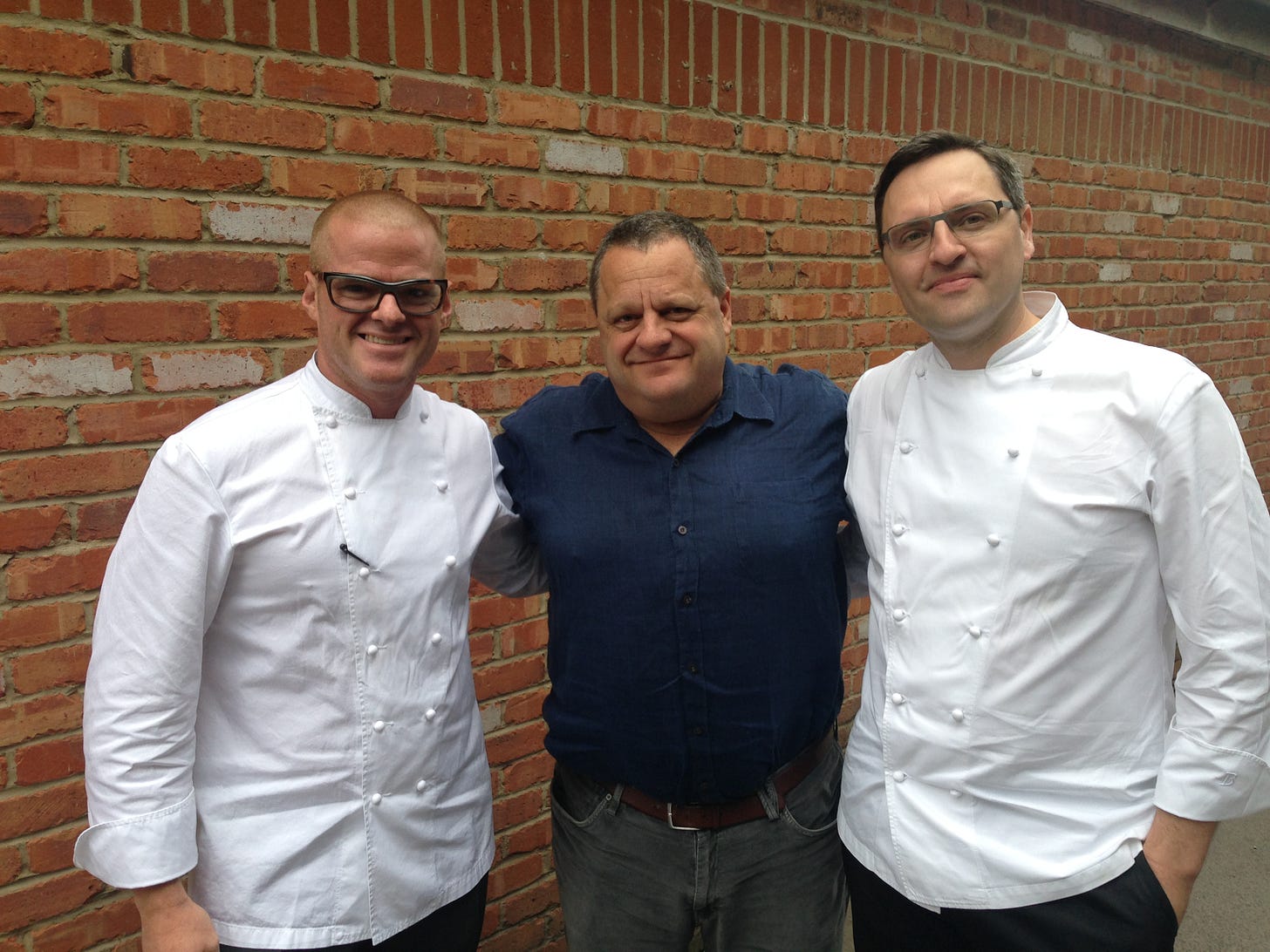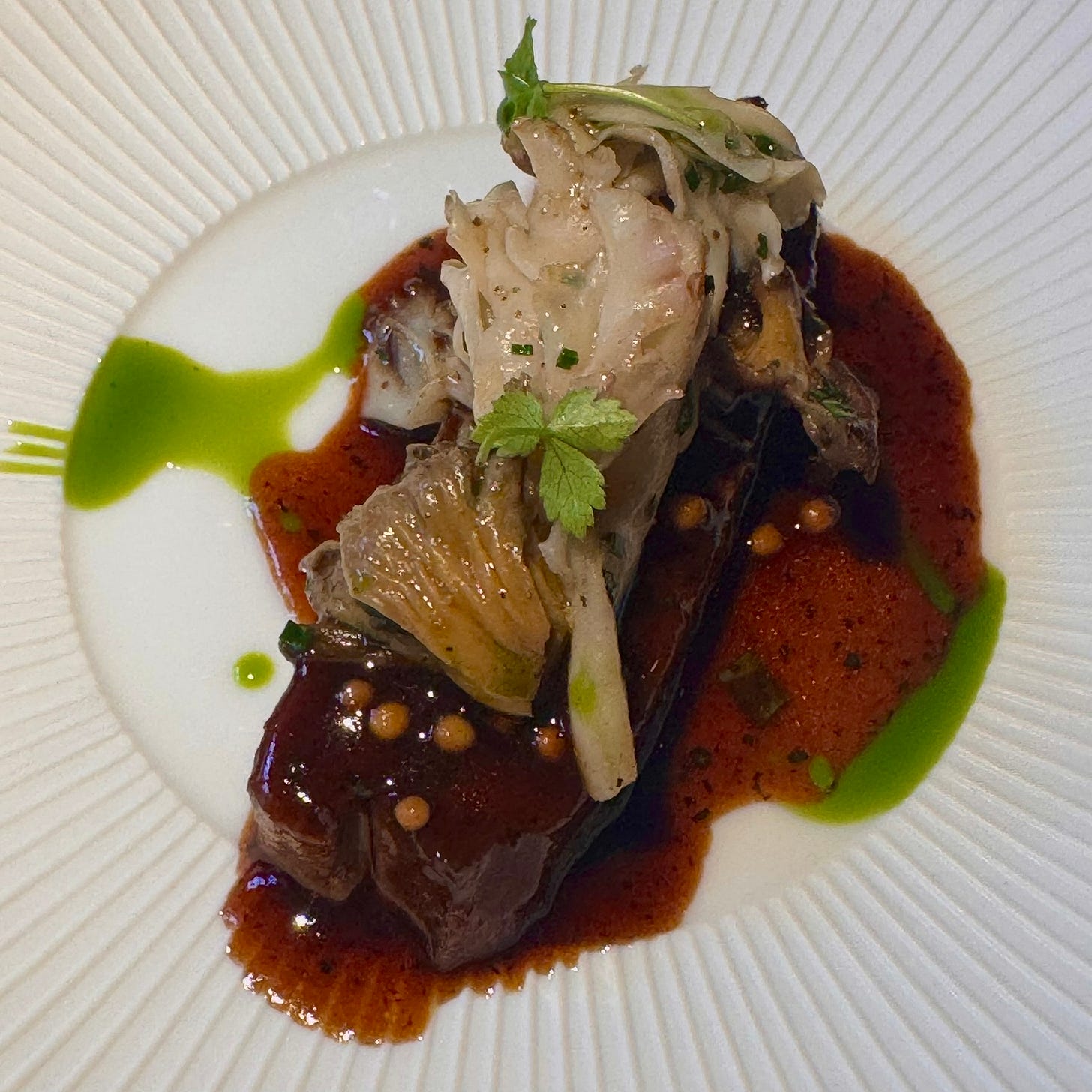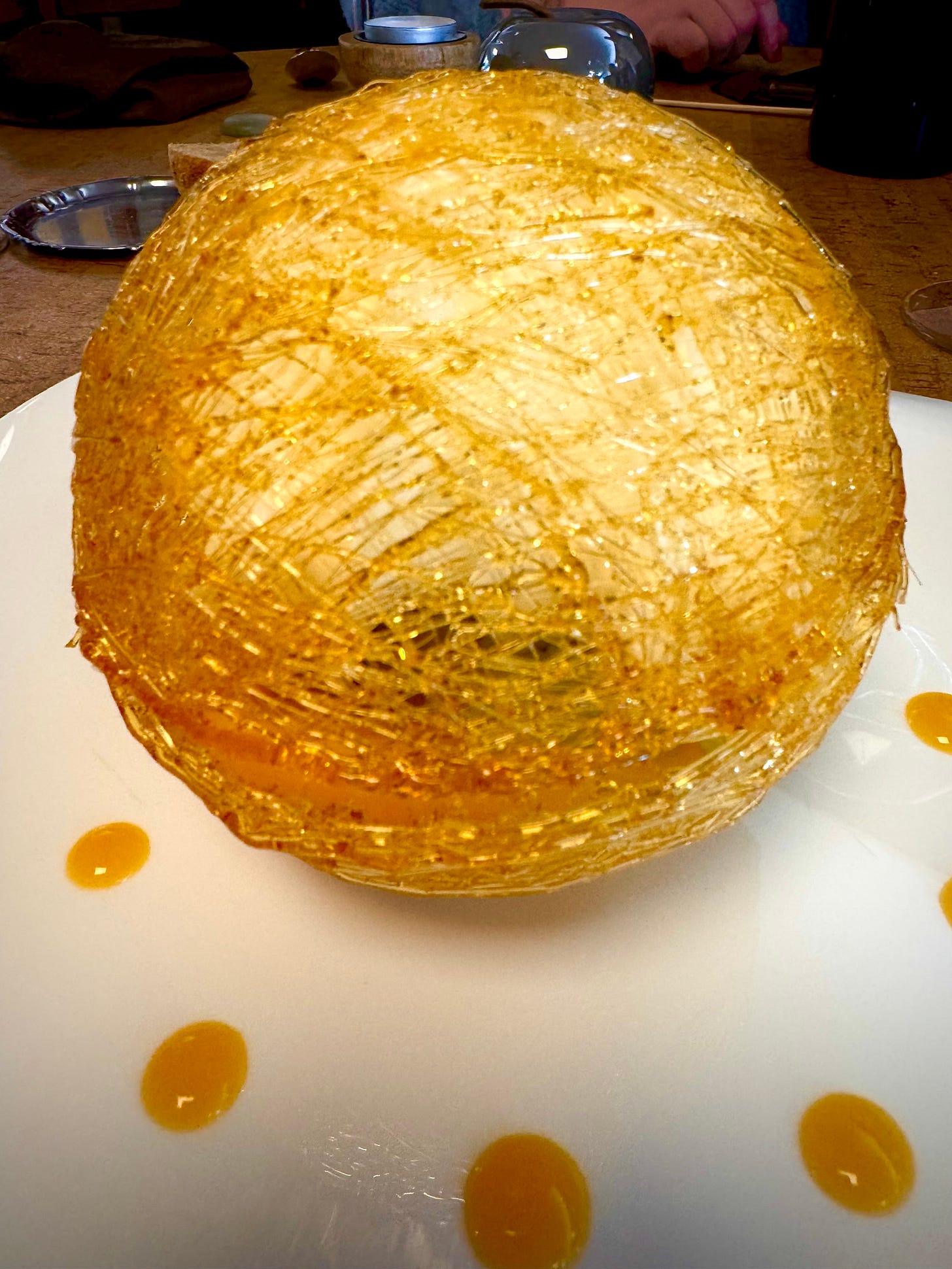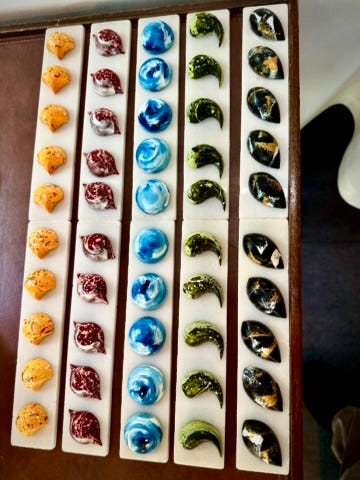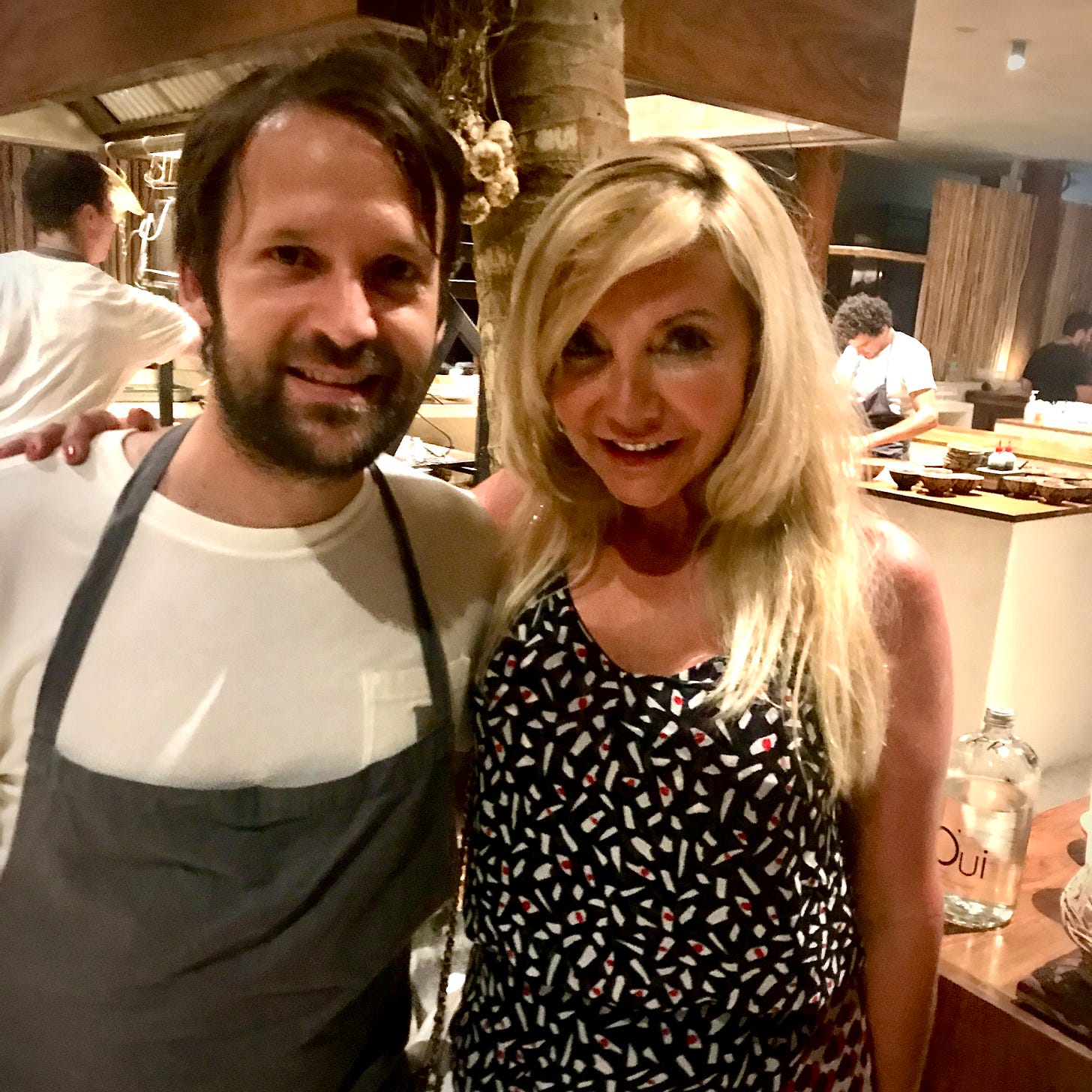Many of history’s greatest restaurants in the world were discovered and/or celebrated by Michelin with stars. These famous star definitions still resonates today - decades after they was created:
⭐️ Best in town - When you are in a city
⭐️ ⭐️ Worth a Detour - A short drive out of your way
⭐️⭐️⭐️ Worth a Journey - Plan your trip around this
…and I have had many life changing dinners with Michelin giants of the past and present like Paul Bocuse, Joel Robuchon and modern giants like Dabiz at Diverxo, Rasmus Munk at Alchemist and Heston Blumenthal at Fat Duck:
This post is not aimed at the above masters. This post is also not aimed at those chefs who simply cook what they love to share with family, friends, neighbors and visitors.
This post is aimed at Michelin and how their expansion drive is compromising it’s historical values by constantly adding new stars, rarely deleting stars and expanding into cities that have little gastronomic merit because the city has paid them to do so.
And - maybe unintentionally? Have created a highly restrictive format:
Michelin has created a global framework to lead starstruck chefs into a standardized menu format that aspires to celebrate innovation but actually promotes homogenization. This includes using a list of common luxury ingredients like caviar, foie, truffle, uni and wagyu to pose as luxurious or adding Japanese ingredients like dashi, miso, sake, soy and yuzo to pose as adventurous. These postures are then decorated with jus, foam, smears and tweezered flowers before being wrapped up in a back story that no one wants to hear.
So what? You may ask. The food at most Michelin star restaurants is generally pretty to look at, pretty good and pretty expensive and you can’t cook any of that at home. If you have never been to a starred restaurant - you will definitely be impressed and will want to try more despite the high price. Ok Jeffrey - fingers tapping - what is your point? Once you have been to a few of these…you start to get a sense of Deja Vu - or - Ground Hog day. You will see a format emerge and once you recognise it after 4-6 meals (that’s $3k down the drain), it really becomes annoying and here it is. The global, standardized Michelin format of 14 - 16+ courses:
Amuse Bouche: There are often 4 with the following characteristics:
You cannot identify them. Even when the server describes them you instantly forget what they were and your pictures are no help
You are told which order to eat them in but since they are served on a jumble of rocks, bushes or mini-trees - you will get disoriented.
However, they are tasty and entertaining and are often the best part of the meal
Spain example: These were beautiful and delicious - but - what were they?
Appetizers - There are often 4 of these as well
They are also difficult to identify
They come one at a time so you can’t get the order wrong
They come in cute little plates and bowls and are nice to photograph
They seem like 4 more Amuse Bouche
No harm done - I guess
France example: What is this? Do you want one? It was pointless.
Palate cleanser - Usually a sorbet of some kind - I love these
Main Courses 2-3 and here is where the real trouble begins:
Bigger than an appetizer but smaller than a real plate of food
If it is not great - you are thankful it is small - something else is on the way. If it is delicious, you wish you had more. Lose-Lose.
Thankfully, you can identify the protein - first seafood, then poultry and then meat
They always come with their sauce in a little pot poured tableside 👍🏼
These mains are almost always disappointing - maybe because they are always boneless and therefore flavorless?
Germany example: - Your main course is like a big appetiser - what is it?
Cheese carts - They are no more
Desserts - 3-4 of them
France example: NO ONE wants 3 desserts - but yes I want this one!
Petit Fours - 4-5 per person. FCK - 3 desserts and now a sack of expensive candy?
At this point in the dinner - I ask to put them in a bag and give them to my Uber driver
These are complicated and expensive and drive up the cost of the menu
No-one wants to eat a sack of candy after three desserts (except your Uber driver)
Thailand example: Wall of Petit Fours (lucky Uber driver!)
Tasting menus take 3 hours+ and cost over $300+ once you include drinks, tax and tip and you are served things you never would have ordered if you had a choice.
I have eaten 100’s of these menus around the world and have passed through the following phases over time:
Phase 1: Shock and awe - What is going on here? A parade of delicacies revealing an insight into the mind of the chef. You get to try the highlights from the restaurants a la carte menu all in one go!
Phase 2: Acceptance - You get comfortable with the format and tell your friends and always order the long menu.
Phase 3: Weariness - What? again? A slice of foie gras rolled in a slice of wagyu with uni and caviar on top for a $95 supplement? Wait. What? They discontinued a la carte?
Phase 4: Rejection: No thanks - I have had enough. I’ll have an appetizer, main and dessert with a side all of my own choosing - It will take 2 hours and cost 1/4th as much.
And there are thousands of these near identical formats around the world.
So how did this happen? Did Michelin cause this? Here is my hypothesis.
Michelin likes to see broad skills and a tasting menu is the best way to test skill range. Multiple 100’s of restaurants have adopted the chosen format and won a star and seen their business expand. Chefs that want a star examine and copy the format that has been so successful and then open that format themselves. The cycle repeats, the proliferation accelerates, and personality is erased
This is the opposite of the best traditional restaurants that have time tested regional recipes passed down for generations and perfected in the kitchen that are presented a la carte. Real food for real people with bones but no foam.
When evaluating where to go, my wife and I now ask.. do they have a la carte? Is it tasting menu only? We do not want tasting menus any more unless prepared by a master who could make a boiled boot taste good.
Is there another way?
There are a number of restaurants that offer mix and match like two star Skina in Marbella:
Amuse bouche: chosen by Skina
Hor’s D’oeurves: You Choose one of three options
Entrees: You choose one of Three options
Desserts: You choose to have one or not
Petit fours: Chosen by Skina - give them to your Uber driver
And here is an article about others that are bringing back A La Carte
And yes - Maria and I would gladly plunk down $400 / each for any of Rene Redzepi’s Noma Tasting Menus:
That’s a wrap for free. If you would like to hear the points of view of the world’s most prestigious foodies - they are behind the paywall: Andy Hayler, Gerhard Huber, Kevin Chan, Paul Grinberg, Andras Jokuti, Bruce Palling, Steve Plotnicki and Josh Josephson
Keep reading with a 7-day free trial
Subscribe to Xtreme Foodies to keep reading this post and get 7 days of free access to the full post archives.


